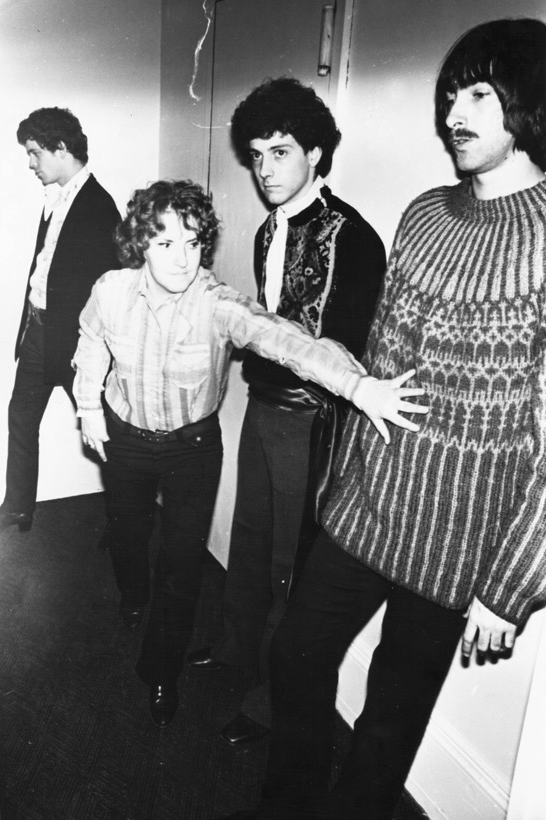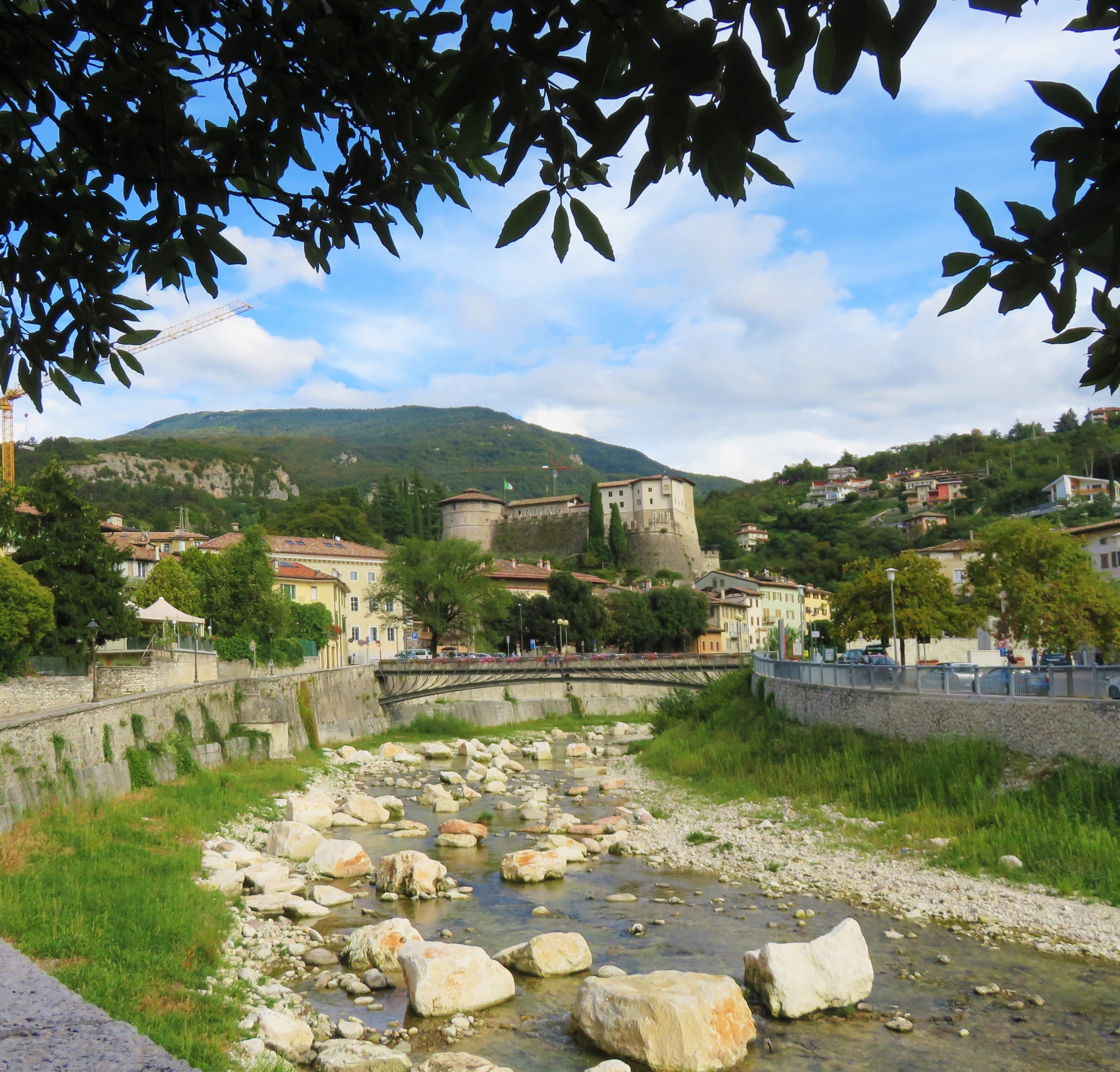|
The Full English (Judge Smith Album)
''The Full English'' is the fourth solo album by Judge Smith. Because of the mainly acoustic instrumentation the album has an "unplugged" feel to it, and is one of the more accessible albums by Judge Smith. Three of the songs on ''The Full English'' had been released before, but were now re-recorded, "Carpet Tiles" and "Tell Me You Love Me" on ''Dome Of Discovery'' (1994), and "It's The Silence That Kills You" as part of the songstory ''Curly's Airships'' (2000). Musically, the album is very diverse, incorporating Eastern European Gypsy-flavoured numbers, songs in the retro-rock tradition, narrative chansons, full-on café Tango, Reggae, and even Hip-Hop beats. Production ''The Full English'' was recorded between October 2004 and March 2005, mainly in Smith's own recording studio in Sussex. Because Smith was invited by René van Commenée to give a lecture in Rotterdam on the subject of "Recording major projects with no money", he was able to record Van Commenée's drum and perc ... [...More Info...] [...Related Items...] OR: [Wikipedia] [Google] [Baidu] |
Judge Smith
Christopher John Judge Smith (born 1 July 1948), is an English songwriter, author, composer and performer, and a founder member of progressive rock band Van der Graaf Generator. Initially working under the name Chris Judge Smith, he has been known simply as Judge Smith since 1994. After Van der Graaf Generator, he has written songs, stage musicals and operas, and from the early 1990s on he has released a number of solo CDs, including three "Songstories". Biography Early years In 1967, with Peter Hammill, Judge Smith founded the band Van der Graaf Generator. He was originally a singing drummer and percussionist (sometimes playing a typewriter),Album notes for four-double CD box ''The Box'' by Van der Graaf Generator (2000), page 6. Virgin Records but after drummer Guy Evans joined the band, Smith realized that there wasn't a great deal left for him to do, since his role was reduced to being a backing vocalist. After recording the first Van der Graaf Generator-single ("People Y ... [...More Info...] [...Related Items...] OR: [Wikipedia] [Google] [Baidu] |
Art Rock
Art rock is a subgenre of rock music that generally reflects a challenging or avant-garde approach to rock, or which makes use of modernist, experimental, or unconventional elements. Art rock aspires to elevate rock from entertainment to an artistic statement, opting for a more experimental and conceptual outlook on music."Art Rock" Encyclopædia Britannica. Retrieved 15 December 2011. Influences may be drawn from genres such as , avant-garde music, |
Curly's Airships
''Curly's Airships'' is a double CD by Judge Smith, released in October 2000. Smith regards the album as a new form of narrative rock music, which he calls "songstory". ''Curly's Airships'' tells about the R101 airship, crashing in France during its maiden overseas voyage in 1930. Amongst many others, Peter Hammill, Hugh Banton, Arthur Brown, David Jackson, John Ellis and Pete Brown perform on the project. Smith believes that the 2 hr 20 min work might be one of the largest and most ambitious single piece of rock music ever recorded. Production Smith worked on the project for many years, between 1993 and its release in 2000. The writing alone took two years. Smith was able to finance the project thanks to a small grant from the National Lottery, distributed by the Arts Council in a scheme called A4E, Arts For Everyone. A part of the recording was done in the Cathedral of Saint Pierre in Beauvais, the city near the R101 disaster, where Hugh Banton played the org ... [...More Info...] [...Related Items...] OR: [Wikipedia] [Google] [Baidu] |
Acoustic Music
Acoustic music is music that solely or primarily uses instruments that produce sound through acoustic means, as opposed to electric or electronic means. While all music was once acoustic, the retronym "acoustic music" appeared after the advent of electric instruments, such as the electric guitar, electric violin, electric organ and synthesizer. Acoustic string instrumentations had long been a subset of popular music, particularly in folk. It stood in contrast to various other types of music in various eras, including big band music in the pre-rock era, and electric music in the rock era. Music reviewer Craig Conley suggests, "When music is labeled acoustic, unplugged, or unwired, the assumption seems to be that other types of music are ''cluttered'' by technology and overproduction and therefore aren't as ''pure''." Types of acoustic instruments Acoustic instruments can be split into six groups: string instruments, wind instruments, percussion, other instruments, ensemble i ... [...More Info...] [...Related Items...] OR: [Wikipedia] [Google] [Baidu] |
Gypsy Style
The term gypsy style refers to the typical way Eastern European music is played in coffeehouses and restaurants, at parties, and sometimes on-stage, in European cities. Music played in this style and loosely called gypsy music differs from actual Romani music played by Romani and Sinti people, many of whom regard the term "gypsy" as a slur when applied to their community. It is mainly instrumental and usually performed by strings, except in the Romanian variant where the panflute is the main instrument. The accompaniment may be executed by various instruments, but by preference includes a cimbalom and a double bass. Characteristics Music played in the style can easily be recognized among many other styles. Characteristic elements of the style include: * instrumentation * the repertoire * the idiom Among these items the last one — the idiom — is decisive: it is mainly the way of playing that determines whether a tune is played in gypsy style or not. It is — ... [...More Info...] [...Related Items...] OR: [Wikipedia] [Google] [Baidu] |
Tango (music)
Tango is a style of music in or time that originated among European and African immigrant populations of Argentina and Uruguay (collectively, the " Rioplatenses"). It is traditionally played on a solo guitar, guitar duo, or an ensemble, known as the ''orquesta típica'', which includes at least two violins, flute, piano, double bass, and at least two bandoneóns. Sometimes guitars and a clarinet join the ensemble. Tango may be purely instrumental or may include a vocalist. Tango music and dance have become popular throughout the world. Origins Even though present forms of tango developed in Argentina and Uruguay from the mid-19th century, there are records of 19th and early 20th-century tango styles in Cuba and Spain,José Luis Ortiz Nuevo ''El origen del tango americano'' Madrid and La Habana 1849 while there is a flamenco tango dance that may share a common ancestor in a minuet-style European dance. All sources stress the influence of African communities and their rhyt ... [...More Info...] [...Related Items...] OR: [Wikipedia] [Google] [Baidu] |
Reggae
Reggae () is a music genre that originated in Jamaica in the late 1960s. The term also denotes the modern popular music of Jamaica and its diaspora. A 1968 single by Toots and the Maytals, " Do the Reggay" was the first popular song to use the word "reggae", effectively naming the genre and introducing it to a global audience. While sometimes used in a broad sense to refer to most types of popular Jamaican dance music, the term ''reggae'' more properly denotes a particular music style that was strongly influenced by traditional mento as well as American jazz and rhythm and blues, and evolved out of the earlier genres ska and rocksteady. Reggae usually relates news, social gossip, and political commentary. It is instantly recognizable from the counterpoint between the bass and drum downbeat and the offbeat rhythm section. The immediate origins of reggae were in ska and rocksteady; from the latter, reggae took over the use of the bass as a percussion instrument. Reggae is d ... [...More Info...] [...Related Items...] OR: [Wikipedia] [Google] [Baidu] |
Rotterdam
Rotterdam ( , , , lit. ''The Dam on the River Rotte'') is the second largest city and municipality in the Netherlands. It is in the province of South Holland, part of the North Sea mouth of the Rhine–Meuse–Scheldt delta, via the ''"New Meuse"'' inland shipping channel, dug to connect to the Meuse first, but now to the Rhine instead. Rotterdam's history goes back to 1270, when a dam was constructed in the Rotte. In 1340, Rotterdam was granted city rights by William IV, Count of Holland. The Rotterdam–The Hague metropolitan area, with a population of approximately 2.7 million, is the 10th-largest in the European Union and the most populous in the country. A major logistic and economic centre, Rotterdam is Europe's largest seaport. In 2020, it had a population of 651,446 and is home to over 180 nationalities. Rotterdam is known for its university, riverside setting, lively cultural life, maritime heritage and modern architecture. The near-complete destruction ... [...More Info...] [...Related Items...] OR: [Wikipedia] [Google] [Baidu] |
Rovereto
Rovereto (; "wood of sessile oaks"; locally: ''Roveredo'') is a city and ''comune'' in Trentino in northern Italy, located in the Vallagarina valley of the Adige River. History Rovereto was an ancient fortress town standing at the frontier between the bishopric of Trento – an independent state until 1797 – and the republic of Venice, and later between Austrian Tyrol and Italy. In the Middle Ages it was known by its German toponyms ''Rofreit'' and ''Rovereith''. This town started to be populated with inhabitants of the prehistory with traces that were found where today are the oldest ways which belong to the actual main historical centre, around via della Terra. The town has a complexity of plans which are printed in various developments, as if it could have different directions to evolve an ideal, brought towards its completeness in the 15th century, from the model of Siena – the leaf of the crown and the classic Athens reference of the foxil Nautilus. Some of the trace ... [...More Info...] [...Related Items...] OR: [Wikipedia] [Google] [Baidu] |
Van Der Graaf Generator
Van der Graaf Generator are an English progressive rock band, formed in 1967 in Manchester by singer-songwriters Peter Hammill and Judge Smith, Chris Judge Smith and the first act signed by Charisma Records. They did not experience much commercial success in the UK, but became popular in Italy during the 1970s. In 2005 the band reformed, and are still musically active with a line-up of Hammill, organist Hugh Banton and drummer Guy Evans. The band formed at the University of Manchester, but settled in London where they signed with Charisma. They went through several incarnations in their early years, including a brief split in 1969. When they reformed, they found minor commercial success with ''The Least We Can Do Is Wave to Each Other'' (released in early 1970 and their only album to chart in the UK), and after the follow-up album, ''H to He, Who Am the Only One'' (December 1970), stabilised around a line-up of Hammill, Banton, Evans and saxophonist David Jackson (rock musician) ... [...More Info...] [...Related Items...] OR: [Wikipedia] [Google] [Baidu] |
Royal Festival Hall
The Royal Festival Hall is a 2,700-seat concert, dance and talks venue within Southbank Centre in London. It is situated on the South Bank of the River Thames, not far from Hungerford Bridge, in the London Borough of Lambeth. It is a Grade I listed building, the first post-war building to become so protected (in 1981). The London Philharmonic Orchestra, the Philharmonia Orchestra, the Orchestra of the Age of Enlightenment, the London Sinfonietta, Chineke! and Aurora are resident orchestras at Southbank Centre. The hall was built as part of the Festival of Britain for London County Council, and was officially opened on 3 May 1951. When the LCC's successor, the Greater London Council, was abolished in 1986, the Festival Hall was taken over by the Arts Council, and managed together with the Queen Elizabeth Hall and Purcell Room (opened 1967) and the Hayward Gallery (1968), eventually becoming an independent arts organisation, now known as the Southbank Centre, in April 1998. ... [...More Info...] [...Related Items...] OR: [Wikipedia] [Google] [Baidu] |






.jpg)
